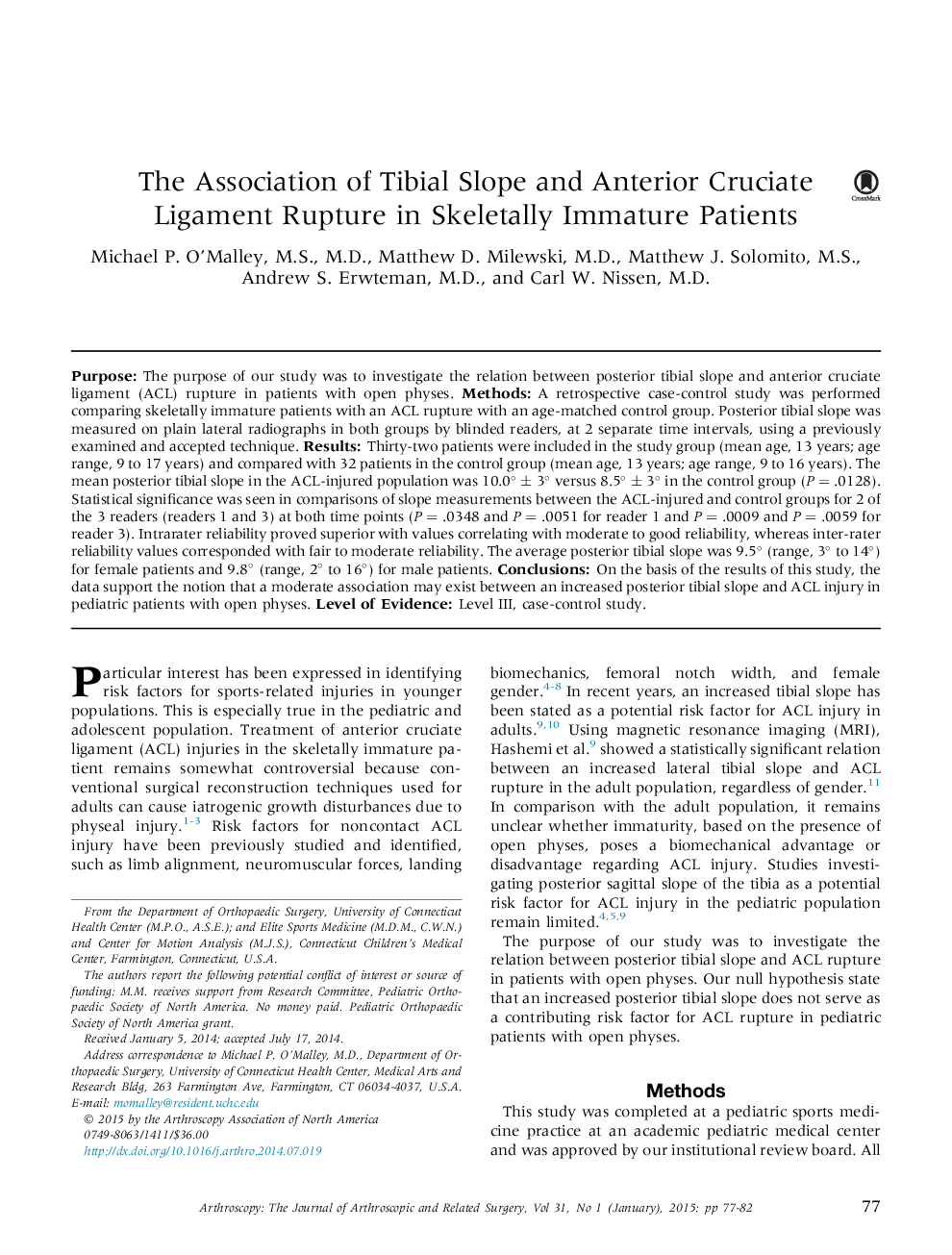| Article ID | Journal | Published Year | Pages | File Type |
|---|---|---|---|---|
| 4042728 | Arthroscopy: The Journal of Arthroscopic & Related Surgery | 2015 | 6 Pages |
PurposeThe purpose of our study was to investigate the relation between posterior tibial slope and anterior cruciate ligament (ACL) rupture in patients with open physes.MethodsA retrospective case-control study was performed comparing skeletally immature patients with an ACL rupture with an age-matched control group. Posterior tibial slope was measured on plain lateral radiographs in both groups by blinded readers, at 2 separate time intervals, using a previously examined and accepted technique.ResultsThirty-two patients were included in the study group (mean age, 13 years; age range, 9 to 17 years) and compared with 32 patients in the control group (mean age, 13 years; age range, 9 to 16 years). The mean posterior tibial slope in the ACL-injured population was 10.0° ± 3° versus 8.5° ± 3° in the control group (P = .0128). Statistical significance was seen in comparisons of slope measurements between the ACL-injured and control groups for 2 of the 3 readers (readers 1 and 3) at both time points (P = .0348 and P = .0051 for reader 1 and P = .0009 and P = .0059 for reader 3). Intrarater reliability proved superior with values correlating with moderate to good reliability, whereas inter-rater reliability values corresponded with fair to moderate reliability. The average posterior tibial slope was 9.5° (range, 3° to 14°) for female patients and 9.8° (range, 2° to 16°) for male patients.ConclusionsOn the basis of the results of this study, the data support the notion that a moderate association may exist between an increased posterior tibial slope and ACL injury in pediatric patients with open physes.Level of EvidenceLevel III, case-control study.
